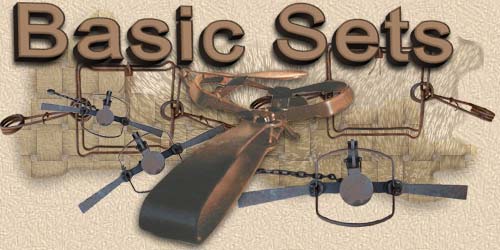

|
(The text and drawings on this page are courtesy of 'Hern' Ralph Blett) ~~~~~~~~~~~~~~~~~~~~~~~~~~~~~~~~~~ |
| The weasel is the trappers smallest furbearer.
They may not as glorious as fox or mink trapping, but they are just as
rewarding to capture. Weasels love to dine on mice, rats, rabbits
and birds and account for heavy poultry losses. Pound for pound,
they are the most ruthless and vicious killer of all the furbearers.
One way to trap weasels is by using a weasel box.
Construction of a weasel box:
General inside measurements are:
Drill a 2 inch diameter hole in each end. The hole should be 1 1/2 - 2 inches from the bottom. Use galvanized nails or screws to attach boards. (excact measurements are not important, your boxes may vary)
Make the weasel boxes with no floor, this will enable you to bed and stabilize traps easily. A board is laid on the top for a roof. The roof is usually 4 inches longer than the box. This will give a 2 inch overhang to protect the entry holes from foul weather. Place a large stone on roof, this will prevent coon or dogs from uncovering your box. Trap Size, Trap Placement, Trap Fastening and Trap Tuning
Two traps will be used per box, one inside each hole. Position trap so that the weasel will step between the jaws of the trap. Place trap pan as close as possible to the entry holes. The traps don't need to be covered since the weasel is not trap shy. Make sure the traps are placed so they don't wobble. To fasten trap chains, hammer two large fence staples to the inside of the box. Use a quick link or split ring to connect chain to staple.
Weasels are very quick and light footed. To achieve faster action/response from these little traps, file the trigger end and pan notch. Square these areas up, while removing burrs and rust. The end result will be a fast, clean action when the pan drops under this light footed predator. Always set trap on hair trigger.
Baits:
Place weasel boxes out before season (without traps) and place a handfull of cracked corn or bird feed inside. Put the roof on. This feed will attract mice and the weasel will be sure to follow. Locations:
Other Uses:
Final Notes:
Weasel lure is not advertised too much, but several lure makers have
a limited supply in stock. Ask your lure dealer early, so you can
have a good supply on hand for trapping season.
When setting traps, always abide by your state and local laws.
|